The rise of medieval fantasy and Viking-themed TV series and movies (with the likes of Vikings, The Last Kingdom, and Game of Thrones) has spawned some “Viking looks” that are equally iconic as they are historically questionable. So what did the Vikings actually look like?
There is no denying that Ragnar Lothbrok’s (Vikings) and Uthred of Bebbanburg’s (The Last Kingdom) mohawk-ponytail hairstyle is really cool, and they have almost become synonymous with how Vikings “should” look for many people.
Yet, there exists no actual evidence that we know of that any Norse person ever wore their hair like that, but with names like Sveynn Forkbeard (a beard parted in two) and Harald Fairhair (especially remarkable hair), it’s fair to assume that Vikings valued and cared for both their hair and their appearance in general.
So let’s see what we know about what the Vikings actually looked like, based on what we’ve established through DNA studies, archeological findings, and documented history.
ℹ️ Viking, Norse, or Viking Age Scandinavians, what’s the correct term? In this article, I’ll use the terms interchangeably, as even though the term Viking stems from the Old Norse word for “pirate”, it gradually came to encompass all Norse people—especially those who embarked upon elaborate naval expeditions from Scandinavia to the rest of the world during the Viking Age.
- Viking Facial Features
- Norse Hairstyles from the Viking Age
- What Hair Colors Did Vikings Mostly Have?
- What Do We Know About Viking Beards?
- What Eye Colors Did Vikings Have?
- How Tall Were Vikings?
- How Big and Strong Were Vikings Really?
- Did Vikings Have Tattoos?
- Were Vikings Clean or Dirty?
- Viking DNA: How DNA Analysis Has Helped Us Understand Viking Looks
Viking Facial Features
We often get an image of grizzled warriors when we see Vikings on TV, but analysis of skeletal remains shows that the Norse had more gender-neutral facial features than Scandinavians today, meaning males and females had more similar characteristics (Danish National Museum).
Rune Circle Metal Wall Art
Metal wall art featuring and inspired by designs found in archeological sites from Viking Age Scandinavia. Free shipping worldwide.
 Visit Our Shop
Visit Our Shop
For example, many female skeletons from Viking graves generally had stronger jawlines than modern Scandinavian women, while many men generally had slimmer faces that the Scandinavian men of today.
We can see this more clearly in modern facial reconstructions produced by academics around the world based on skeletal and DNA analysis (more on this further down in the article).
Reconstructed Norse Facial Features from DNA Analysis and Skeletons
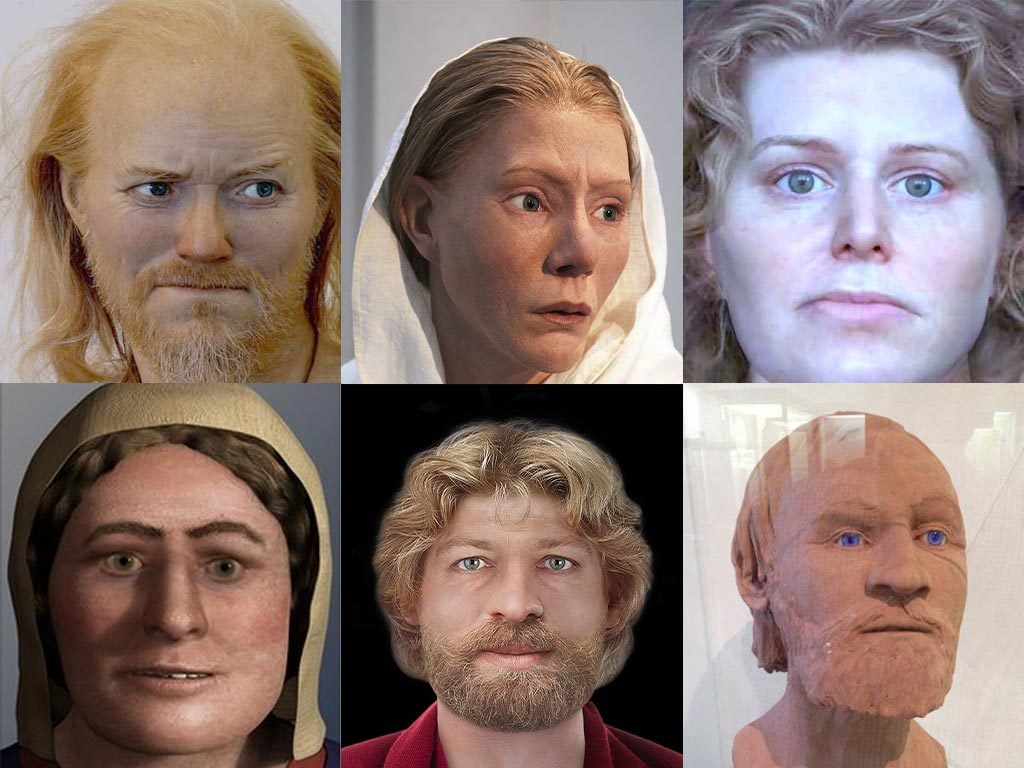
For those of you who have spent some time in modern-day Scandinavia, most of these faces should look fairly familiar to you, which is something I’ll get more into a bit further down in the article.
Norse Hairstyles from the Viking Age
When it comes to how the Norsemen (and women!) wore and styled their hair, we do have a few artwork findings that show us examples of how Viking hairstyles could look, such as the “Valkyrie knot” for Norse females and the “Norman cut” for Norse males.
With the help of modern DNA analysis of ancient Viking remains, we can also establish factors such as what hair color was most common among the Norse people, if they had a lot of body hair, and how likely it was that they had a beard (or at least could grow one).
Finally, there are some written accounts as well that describe hairstyles in more or less detailed ways,
Combining all of these sources (archaeological evidence, DNA findings, and written texts) gives us a much better picture of how Viking Age hairstyles might’ve looked, and it does show some interesting findings.
I’m diving deeper into what we know of Viking hair and hairstyles in a separate article, so if you’d like to find out more and see some examples of fairly historically accurate modern Viking hairstyles go check that out.
I’ll also cover the key takeaways below if you’d rather keep going.
Let’s start with going through what we know about how the Norse wore and styled their hair:
How Did Viking Men Wear Their Hair?
Here are some historically accurate Viking male hairstyles found in archeological evidence and described in historical accounts from the time period:
| Shoulder-length hair parted in the middle (flowing off the sides or tied in knots) | 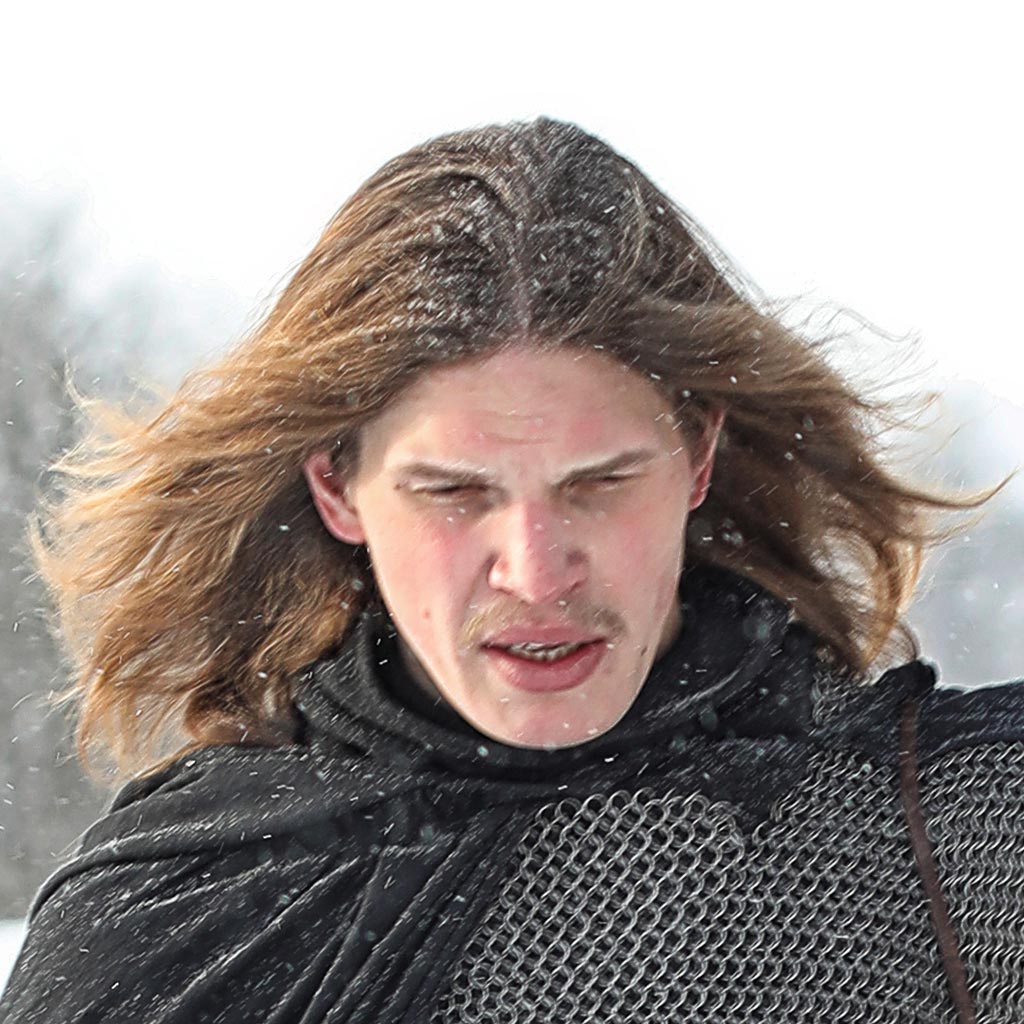 |
| Long hair combed back carefully | 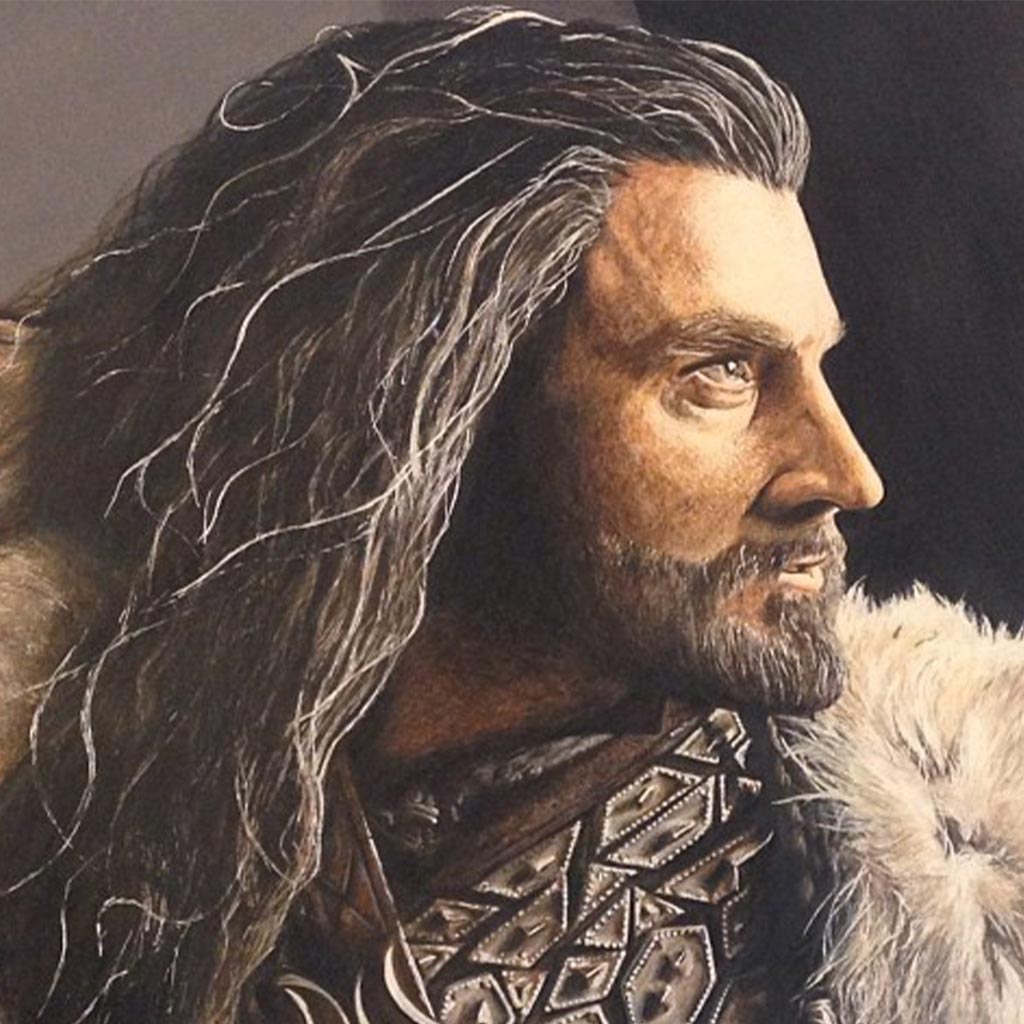 |
| Long hair tied in a knot or braided behind the back | 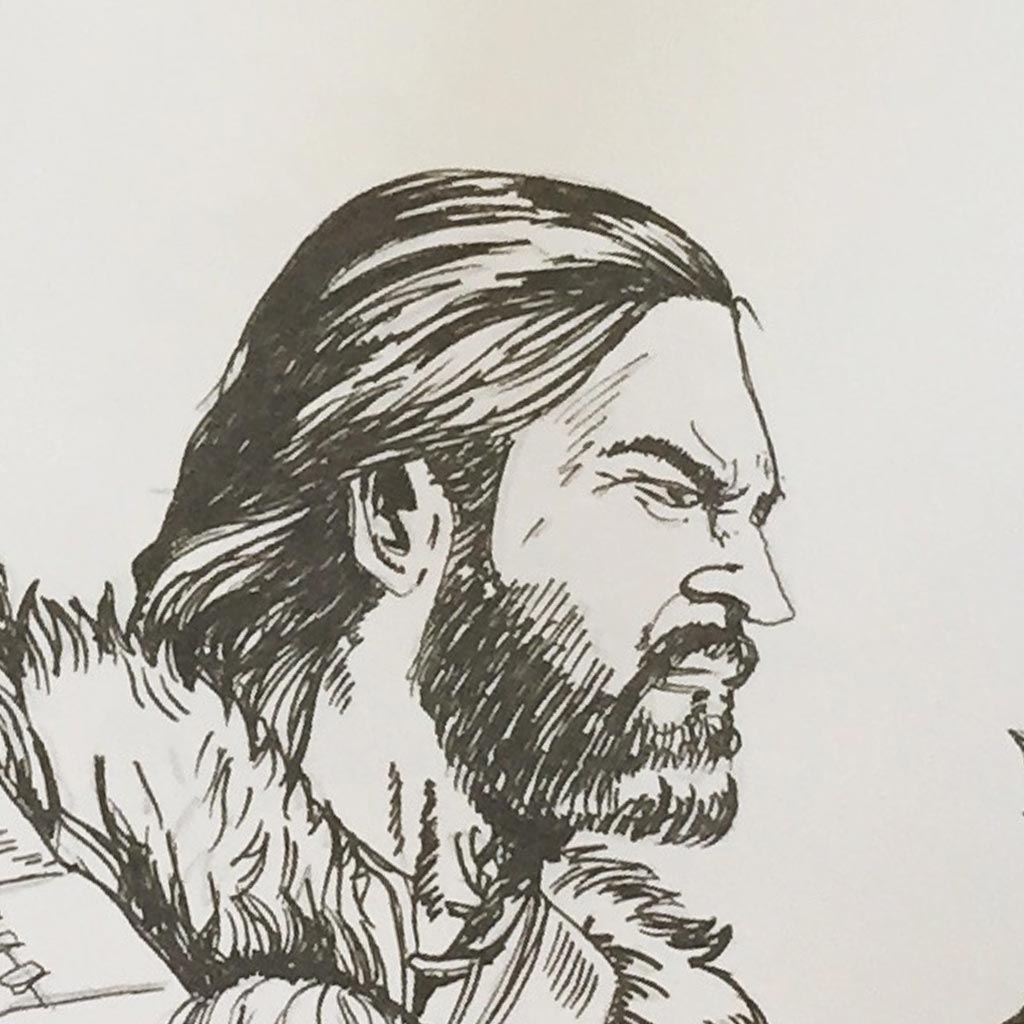 |
| Shaved back and longer hair in front (“The Norman Cut”) | 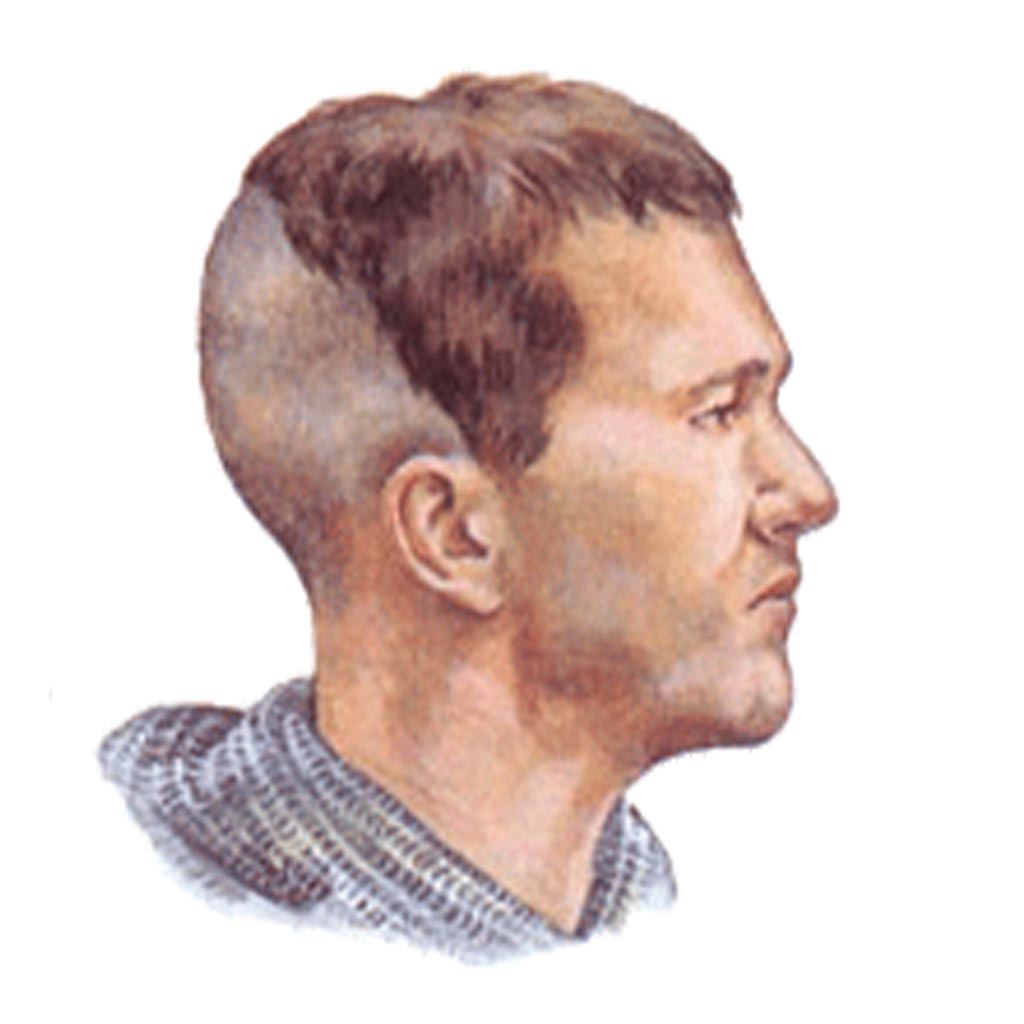 |
| Shaved sides and back, with high bowl cut (“The Oseberg Cart Cut”) | 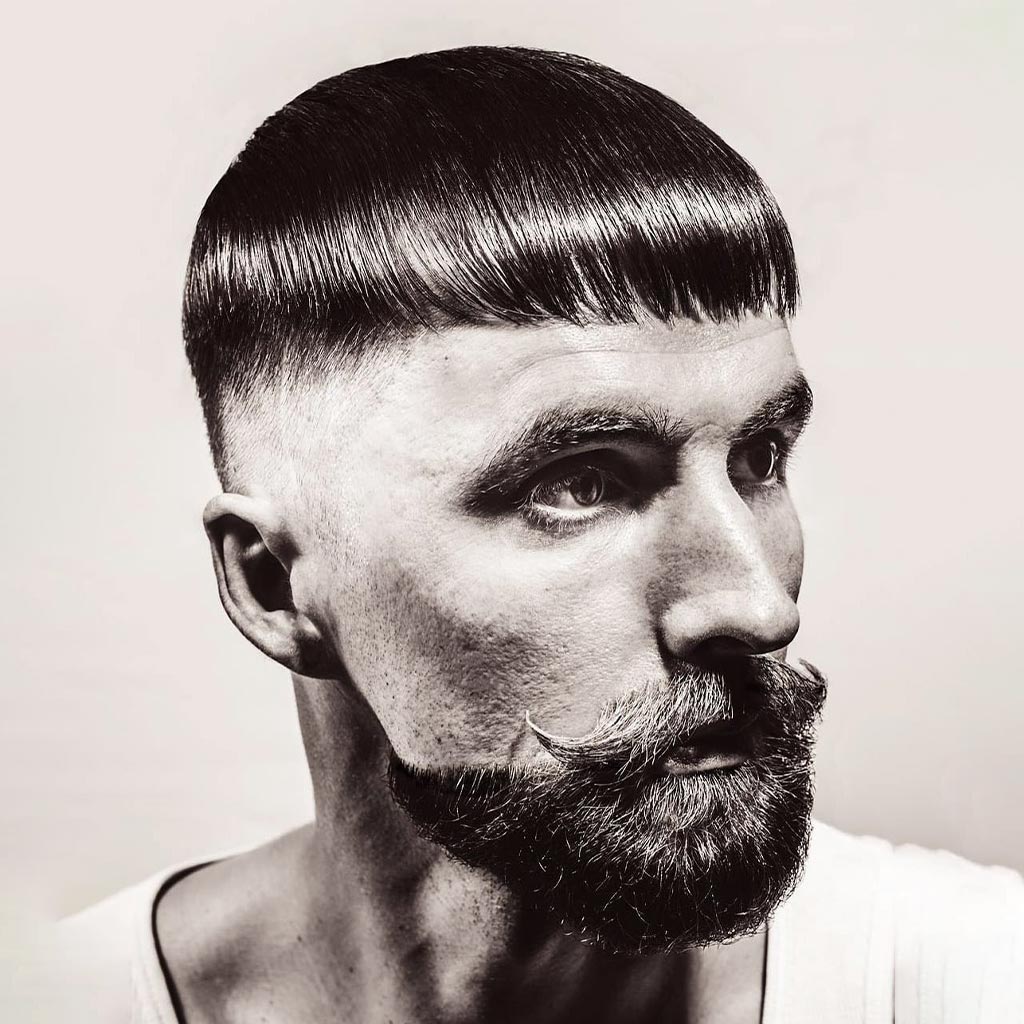 |
These Norse hairstyles can be seen in archeological findings that have been dated from the Viking age, in the form of jewelry, sculptures, and other artifacts, as well as in historical accounts such as texts, letters, and inscriptions.
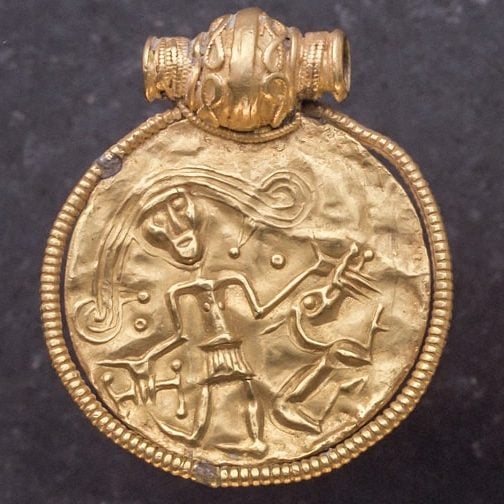
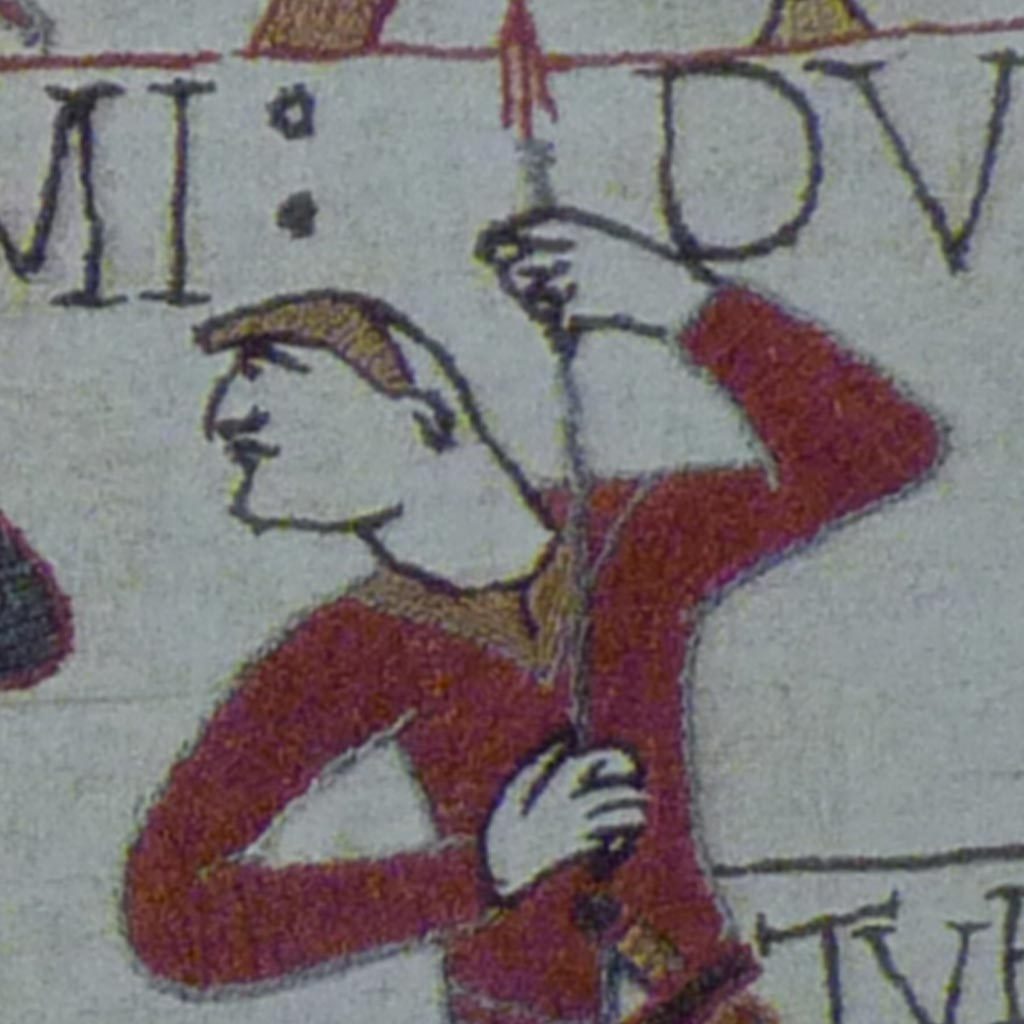
Viking sculptures and engravings have been found with generally long hair and beard that was usually shaped, tied or braided in different ways in order to not be in the way (while in combat or working).
There is a general belief among Norse historians that Vikings and Germanic people in general assigned special powers to long hair and beards, with the Suebi knot and Merovingian kings being two good Germanic examples where longer hair presented in a certain way was believed to have an effect on strength and power.
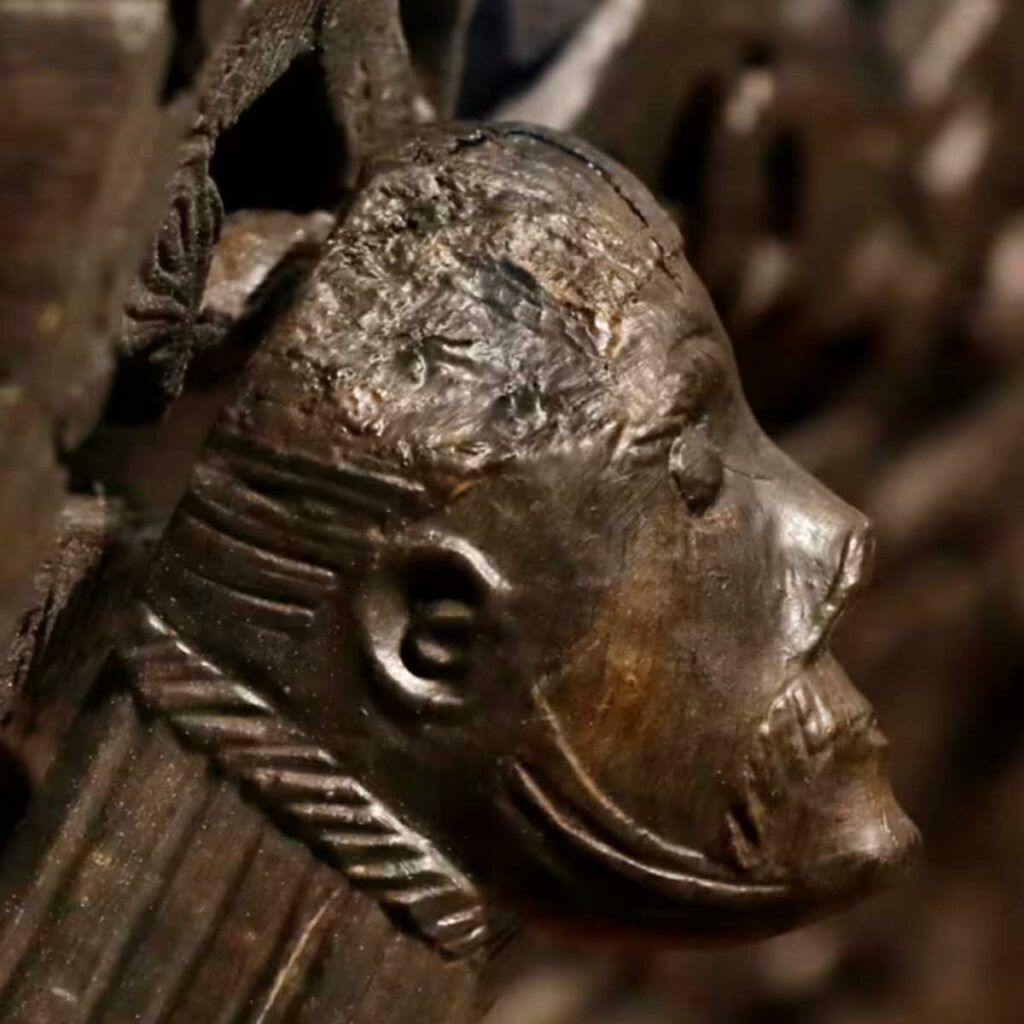
A few notable exceptions have been found on the Oseberg cart from around 800 CE, where shorter haircuts with shaved sides and backs are clearly engraved multiple times, though there are plenty of long-haired specimens as well.
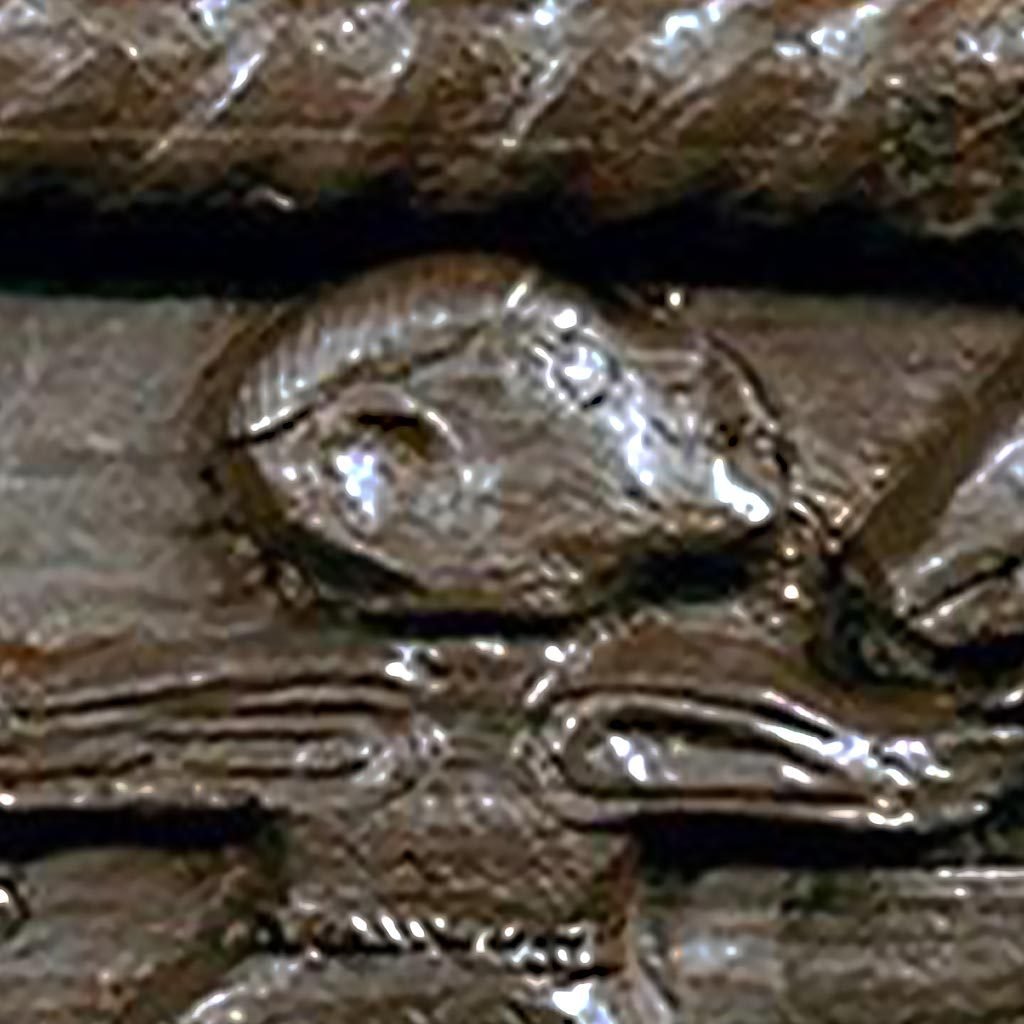
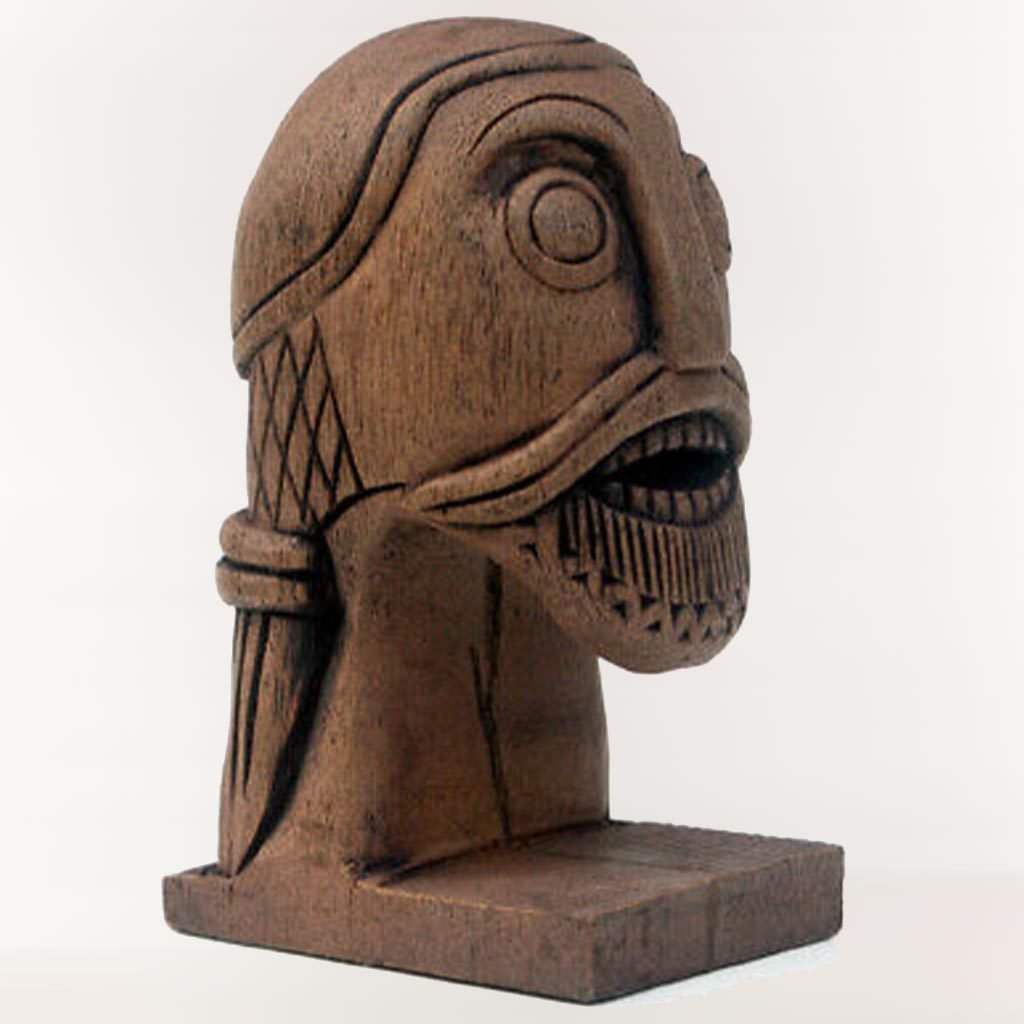
One of the few written accounts we have on specific Viking hairstyles is an Old English text where an Anglo-Saxon man is angry at his brother for adopting a heathen haircut and forgetting his own customs. He wears his hair “balded neck and blinded eyes”, which suggests the so-called “Norman Cut” with long hair in the front and shaved in the back.
What is interesting here is that this particular hairstyle was so associated with the Vikings/Normans that this English man felt shame that his brothers would wear his hair like that.
It’s also important to note that while there is no evidence of the mohawk-style haircut we see so much in TV shows (i.e. Ragnar & Uthred), it is of course possible that some Vikings styled their hair like that.
Especially since Vikings have been documented to take good care of their hair and appearance in general, and since there are some similar haircuts where the sides and back are shaved. That particular haircut has just never been described or documented in any way as far as we know.
For more information on what we actually know about Viking hairstyles, I’d recommend listening to Dr. Jackson Crawford who specializes in Old Norse (he teaches Scandinavian Studies at my Alma Mater UC Berkeley, on top of talking about Norse mythology on YouTube):
How Did Female Vikings Wear Their Hair?
We do not have as many archeological findings of different female hairstyles as we have for male cuts, but nonetheless here are some that are fairly historically accurate:
| Long hair parted in the middle and tied back in a knot or braid | 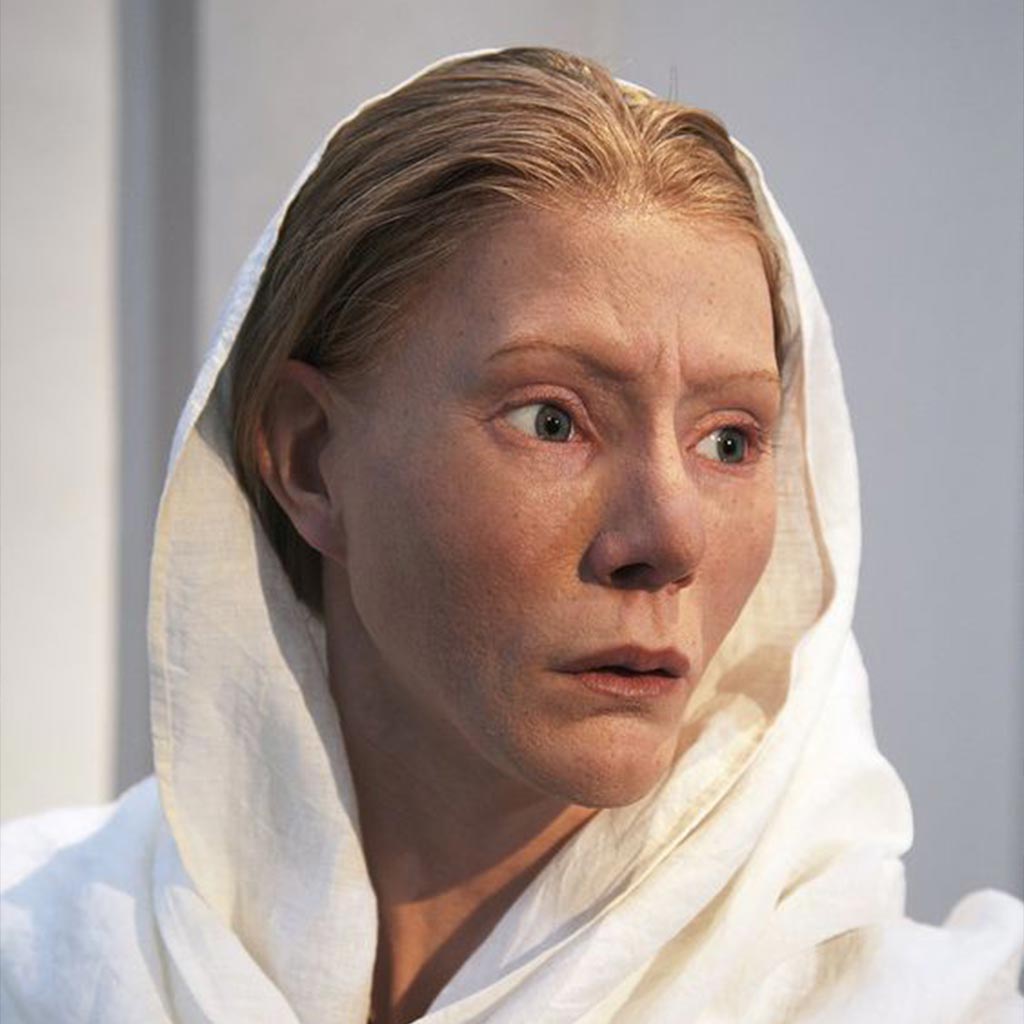 |
| Long hair combed back carefully | 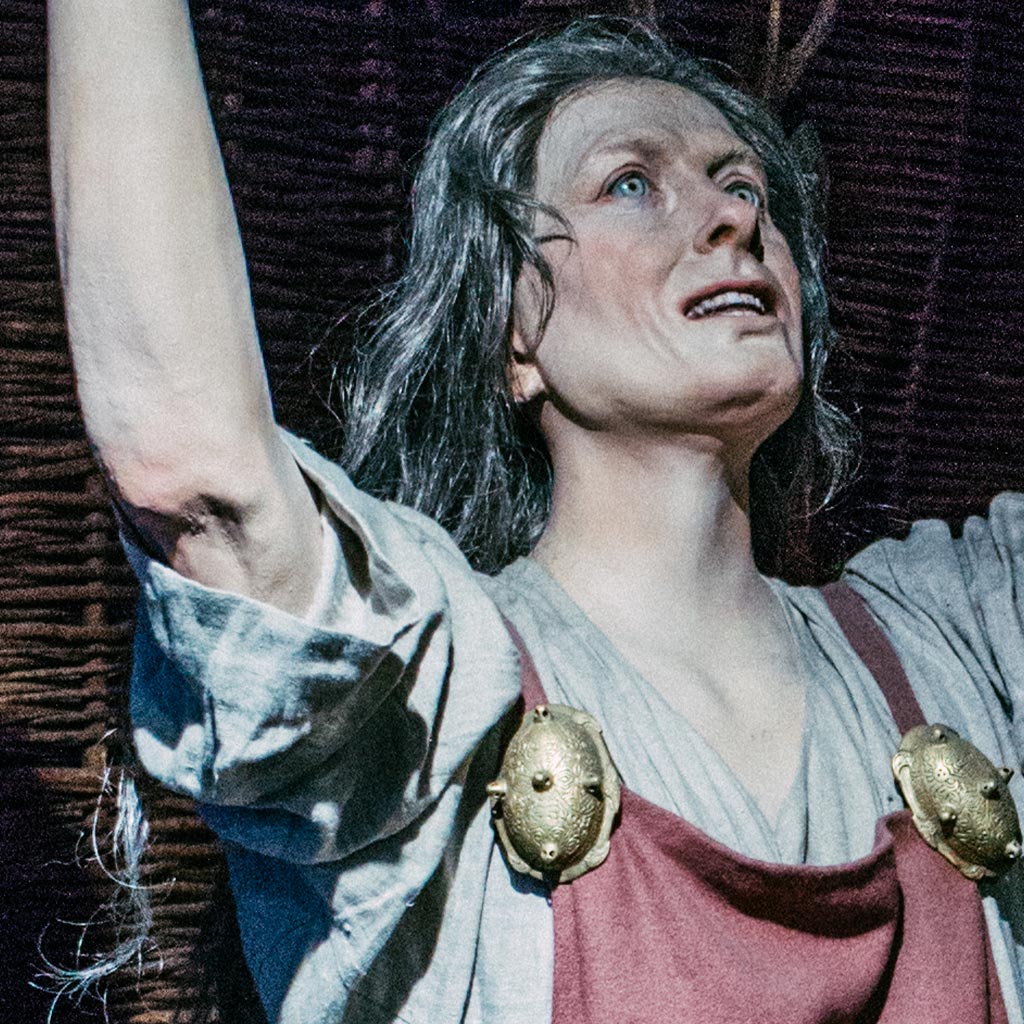 |
| Long hair tied in a knot or braided to one side | 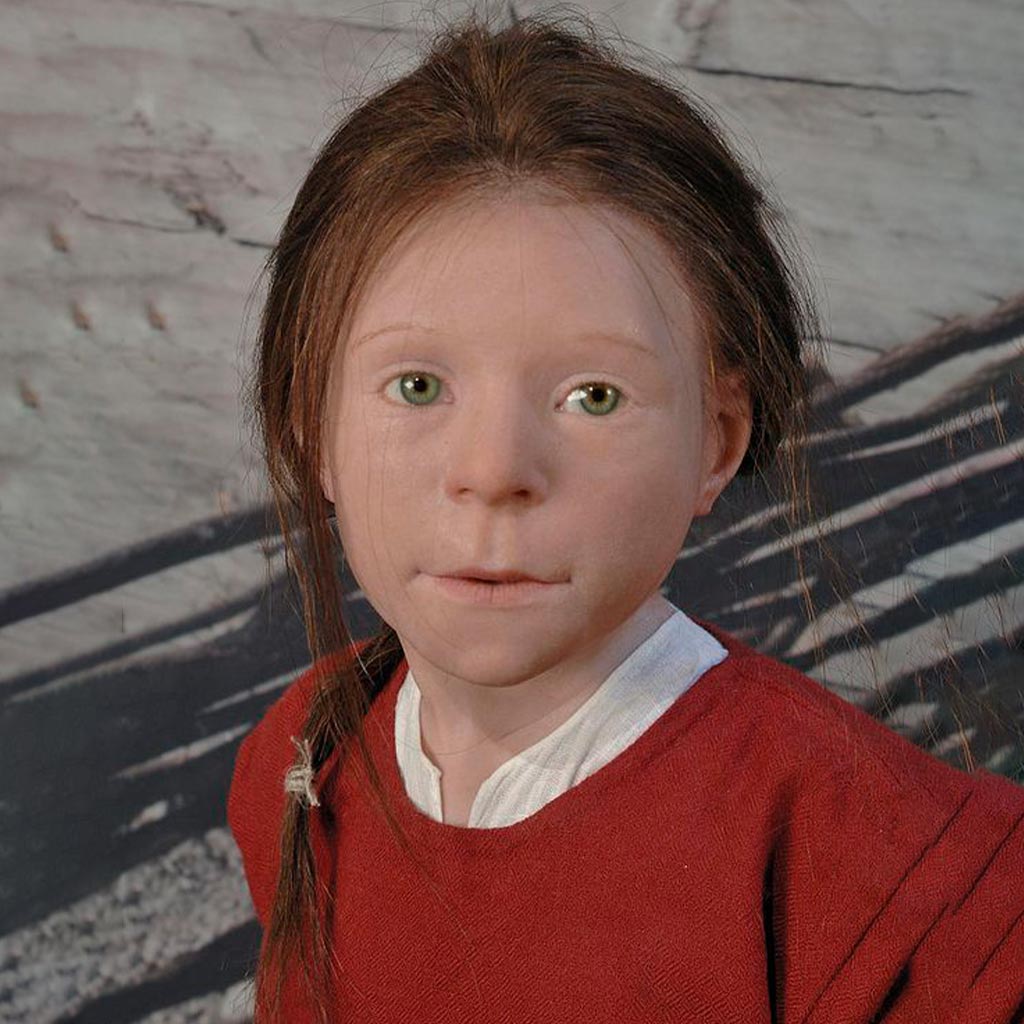 |
| Long hair tied in a valkyrie knot behind the back | 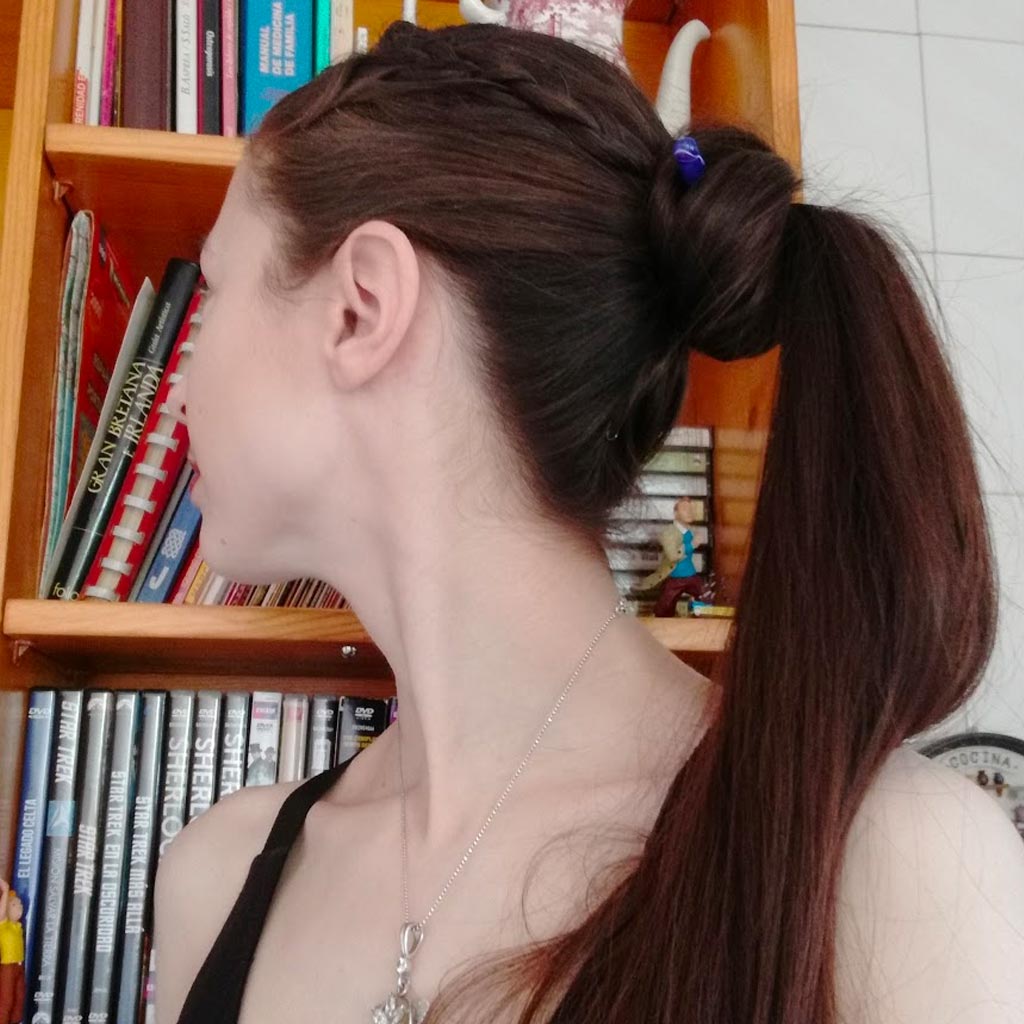 |
The hairstyles come from artifacts, sculptures, engravings and similar left behind in Viking graves, so they are likely to have been at least somewhat popular during the Viking Age.
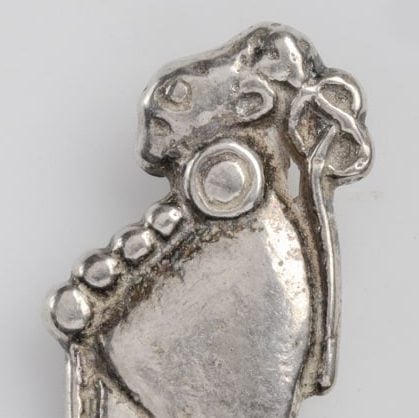
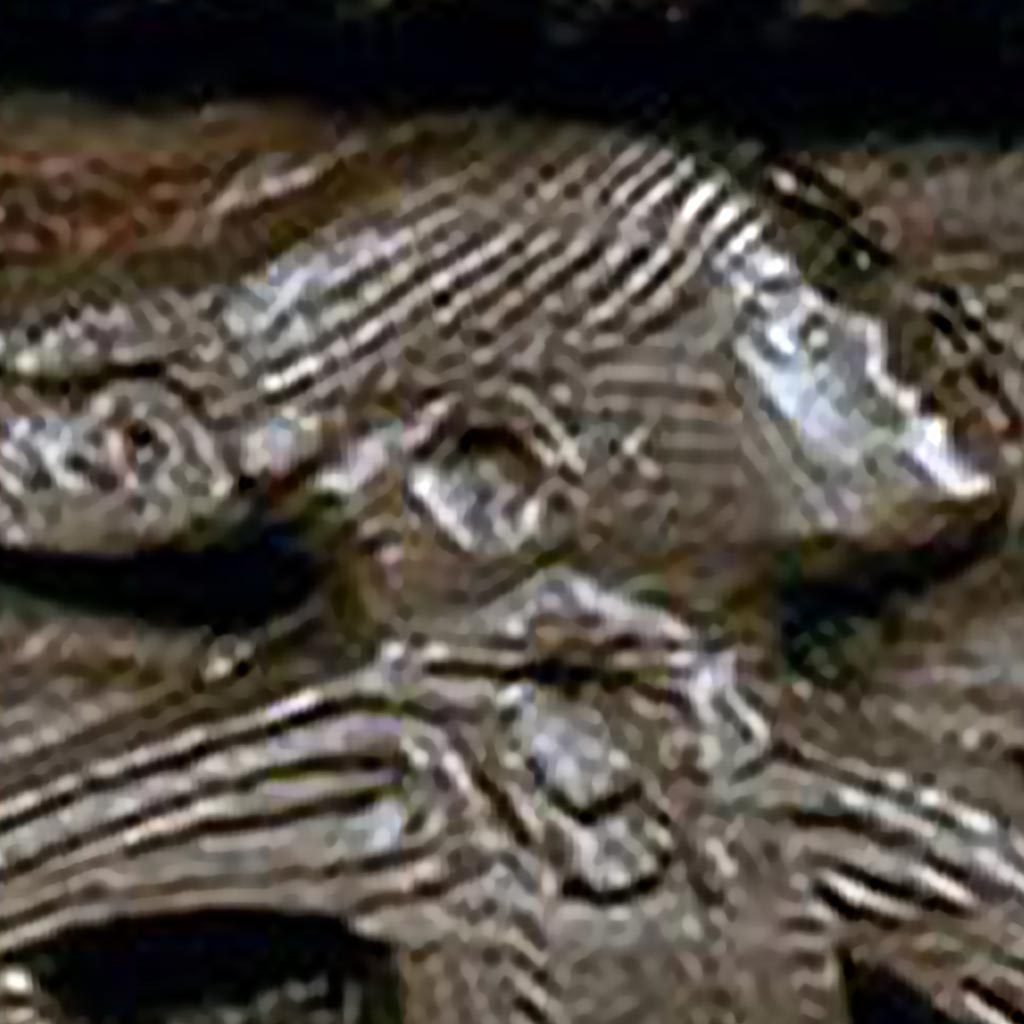
The Valkyrie knot is the most commonly depicted hairstyle, as the Valkyries are the most commonly depicted Viking females.
In Norse mythology, the valkyries were responsible for bringing half the warriors who have fallen in battle to Valhalla, while the other half go to another famous Viking female figure; Freya, the goddess of fertility, love, beauty, and war.
If you’d like to try your hand at making your own valkyrie knot, here’s a detailed video with instructions:
Did Vikings Shave Their Heads?
Vikings were known to at least partially shave their heads in order to achieve specific hairstyles, such as the “Norman cut” with shaved back and long hair in the front, and a similar but differently angled high bowl cut found in the Oseberg cart. So we can safely assume that there were Vikings who shaved their heads.
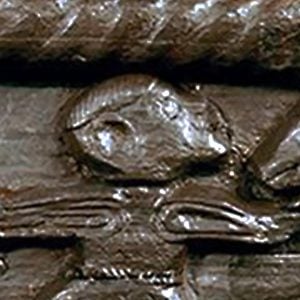
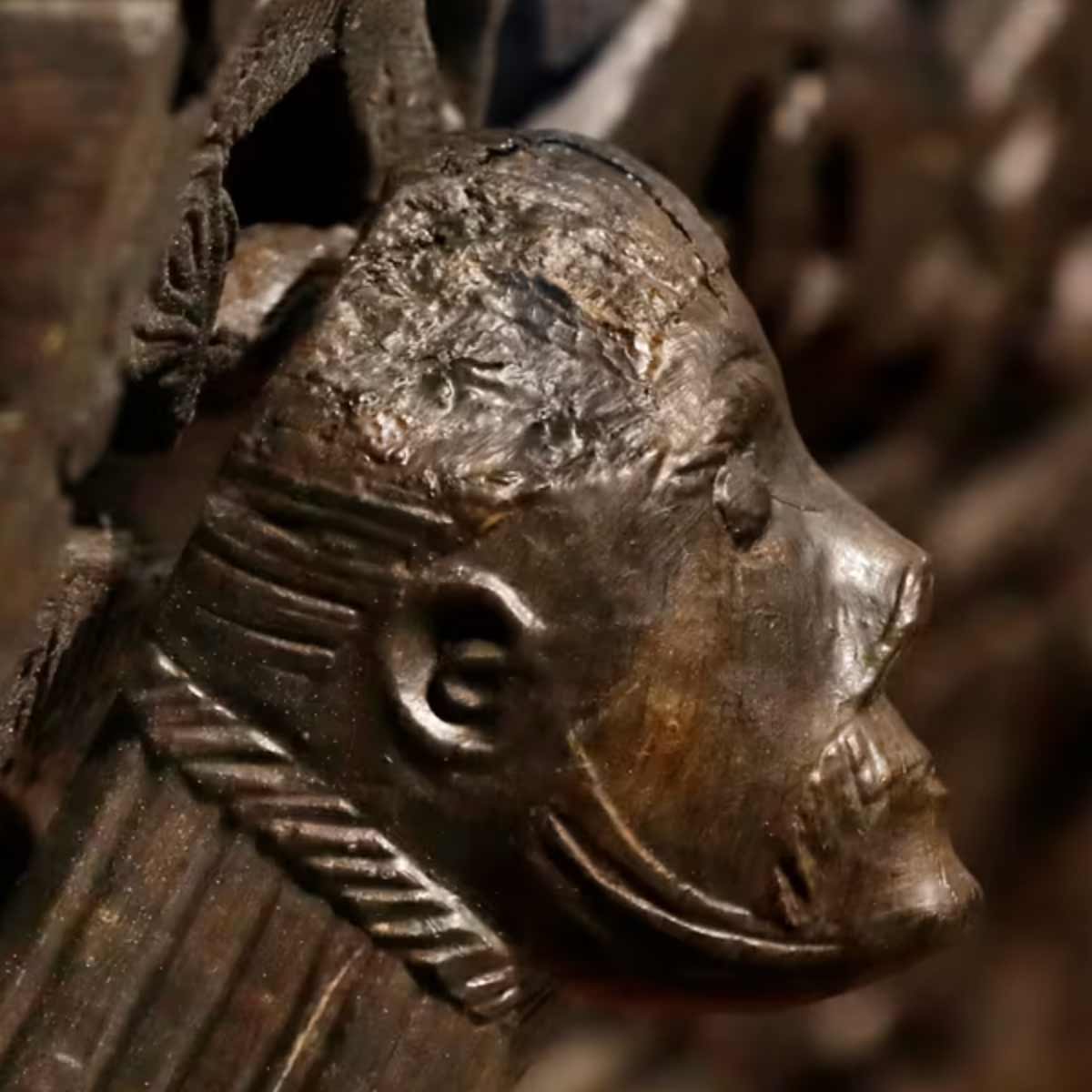
That said, it is assumed that having long hair was generally seen as more important the higher up on the social ladder one was, with the jarls having long and elaborate hairstyles, while they had their thralls (slaves, who made up around 20-30% of the population) generally cut their hair short.
What Hair Colors Did Vikings Mostly Have?
Vikings were mostly blond (with Danes specifically being mostly red-haired) according to skeletal DNA studies, but identifying as “Viking” wasn’t necessarily limited to people with Scandinavian ancestry (vikingr just means “pirate” after all). In fact, according to a 2020 study published in Nature, Vikings were likely more dark-haired than Scandinavians are today.
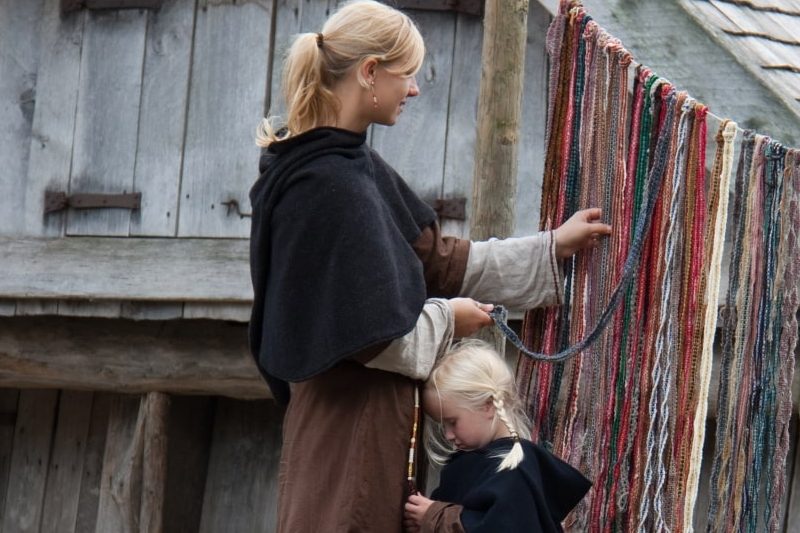
The DNA study of 442 Viking skeletons reveals that while Viking bands were mostly sourced from Scandinavia, they could also be comprised of some Picts and Britons, and although the study even found Southern European and even Asian ancestry, a later 2025 study published in the same journal rebukes these findings and attributes them to pre-Viking Age migrations from Central and Eastern Europe instead.
Either way, both the 2020 and 2025 study indicate that Vikings intermingled with people they met on their explorations, both on-location but also by bringing them home to Scandinavia in some cases. The studies showe how the Viking population was very diverse compared to neighboring cultures and peoples, especially in popular trade spots such as Gotland, Öland, and Zealand.
As such, there was a larger proportion of dark-haired Vikings found in the 2020 study than there are dark-haired Scandinavians today, affirming that while they are largely associated with coming from the Scandinavian region, there was plenty of diversity from all over the known world within the people identifying as Viking.
But in the end, study co-author Ashot Margarayan still concludes that Vikings were “blond in their majority”, while the National Museum of Denmark believes most Danes were red-haired Viking Age.
And while the 2020 study paints a fairly diverse picture of Vikings, the 2025 study was based on an improved DNA analysis method and concluded that Vikings almost entirely came from Scandinavia, and that Viking Age Scandinavians weren’t very different from modern-day Scandinavian—meaning most where likely fair-haired and bright-eyed.
Did Vikings Color Their Hair?
Vikings were known to use strong soaps made of ashes and animal fats, which had a high lye content that bleached their hair. This was used in their beards as well, and had the benefit of killing hair lice (a very common problem at the time).
Though it is likelier that it was used for the cosmetic effect since most Vikings had light hair, and it was likely seen as a sought-after trait for some.
What Do We Know About Viking Beards?
Vikings were often described and depicted with well-groomed and sometimes elaborate facial hair, ranging from full and long beards to more practical Viking-style mutton chops and mustaches. Historians believe that most Norse men had facial hair, and those who didn’t were even mocked for it according to the sagas.
The Viking beard was also a source of pride, and if someone insulted another man’s beard that was grounds for killing the other man according to the sagas.
So Did All Vikings Have Beards?
Beards and mustaches were very common in Vikings according to archeological findings and written records. The Viking beard was a source of pride and honor among the free men, and insulting one’s beard could result in a deadly outcome or sometimes even prolonged feuding between families.
Furthermore, recent DNA studies show that people from modern-day Scandinavia have a specific gene-makeup that is linked to more facial hair growth than average, as well as a facial hair growth pattern that is concentrated around the upper lip, cheek, neck, and chin (meaning full beards are common among Scandinavians).
This is assuming Viking Age Scandinavians had a similar genetical makeup for certain markers related to beard growth, which the same study supports, mentioning that Vikings largely had similar genetic markers as modern-day Scandis when it comes to hair growth.
Why Did Vikings Grow Beards?
Based on historical accounts such as the Norse sagas and Anglo-Saxon annals, Vikings were generally proud of their beards, and facial hair in archeological findings see a sudden increase during the Viking age (compared to the bronze age), suggesting there was a strong cultural preference for beards. For example, Njal’s Saga explains how Norsemen were expected to grow a beard, and those who didn’t were often mocked.
Did Vikings Braid Their Beard?
Vikings were known to braid their beards in different ways according to written primary sources, among them the stories about Svein Tveskägg (Forkbeard), known for his beard that was split into two braids.
What Eye Colors Did Vikings Have?
Vikings largely had similar genetic markers linked to eye color as modern-day Scandinavians according to two different Viking DNA studies published in Nature in 2020 and 2025, meaning the vast majority (50-80+% depending on region) would have blue, green, or hazel eyes following the findings in Peter Frost’s European hair and eye color.
The 2020 study also found a higher proportion of dark eye colors in Vikings, than in modern-day Scandinavians, hinting that the Vikings were comprised of a more diverse group of people than the Nordic countries have today.
Did Vikings Wear Eyeliner and Other Makeup?
Vikings were described wearing artificial eye make-up that “made their beauty never disappear”, with their beauty “enhanced in both men and women” by Al-Tartushi around 950 CE. He also noted that they “use a kind of indelible cosmetic to enhance the beauty of their eyes” (believed to be Black Henbane).
Darkening the areas around the eyes would also help against sunlight reflections at sea and on snow, so there are likely practical as well as cosmetic elements behind this custom.
How Tall Were Vikings?
Vikings were likely quite tall even by modern standards, with adult Norse males in Sweden, Norway, and England found to average around 176 cm (5 ft 9¼ in) in height, compared to 175.3 cm (5 ft 8⅞ in) in modern-day USA and England. The taller Vikings reached around 190 cm and the shorter around 170 cm.
Here are the average heights of adult males during the Viking Age, derived from sizable archaeological findings:
Avg. height of adult males during the Viking Age (in cm)
| Vikings, England (C Falys 2014) | 176.0 cm (5 ft 9¼ in) |
| Vikings, Norway (W Short 2010) | 176.0 cm (5 ft 9¼ in) |
| Vikings, Sweden (R Gilberg 1976) | 176.0 cm (5 ft 9¼ in) |
| Northern Europeans Average (R Steckel 2004) | 173.4 cm (5 ft 8⅛ in) |
| Vikings, Iceland (J Steffensen 1958) | 172.3 cm (5 ft 7⅝ in) |
| Vikings, Scandinavian Average (E Roesdahl 1987) | 172.1 cm (5 ft 7⅝ in) |
| Anglo-Saxons, England (G Galofré-Vilà 2017) | 172.0 cm (5 ft 7⅝ in) |
| Norse, Denmark (A Winroth 2014) | 171.0 cm (5 ft 7⅜ in) |
| Global Average (based on archeological findings) | 170.0 cm (5 ft 7 in) |
| Romans 500 BCE–500CE, Italy (G Kron 2005) | 168.0 cm (5 ft 6⅛ in) |
These average heights can be compared to the current average male height of 175.3 cm (5 ft 8⅞ in) in both the US and England, which means most Vikings were likely quite tall even by modern standards.
Fairly recent mass-grave findings in Sweden show some Scandinavians from the Viking Age that were around 180-190 cm tall, and the largest Viking DNA study ever embarked upon shows that the Vikings were highly likely to be tall.
The Arab chronicler Ibn Fadlan reaffirms this, being quite impressed with the size of a group of Norse “merchants” (specifically Rus, likely with Swedish origins) he encountered on his travels near the Volga river. He describes them this way:
I have seen the Rus as they came on their merchant journeys and encamped by the Volga. I have never seen more perfect physical specimens, tall as date palms, blonde and ruddy; they wear neither tunics nor caftans, but the men wear a garment which covers one side of the body and leaves a hand free.
Ibn Fadlan
🤔 Curious how modern-day Scandinavians look compared to their Viking ancestors? I wrote an article describing how Nordic people actually look, with all the data you need to get a good picture of exactly how blond, blue-eyed, tall and strong Scandinavians are on average today.
And despite my own hesitations, Short also believes that when “the sagas describe feats of extraordinary strength” they “may not entirely be heroic exaggeration”.
How Big and Strong Were Vikings Really?
Vikings have been found to weigh up to 140 kg (309 lbs) in archeological findings, and were described as stronger (on average) than most people they encountered. The sagas reveal feats of great strength, and while that may be exaggerated, analysis of skeletal remains show larger-than-average muscle mass.
Archeological evidence on display on the Viking Museum of Oslo shows some very large Norsemen that are believed to have weighed around 130-140 kilograms, which amounts to 287-309 pounds. The size and strength of Vikings are discussed further in William Short’s Icelanders in the Viking Age where he writes the following:
One significant way in which Viking-age Scandinavians differed from modern people is in their physical strength. It is likely that people in the saga age routinely had strength capabilities greater than those typical of modern people. The sagas often tell tales of exceptional strength, which is supported by several forms of archaeological evidence.
William Short, Icelanders in the Viking Age: The People of the Sagas (2010)
Many Vikings were named after to their abnormal strength, size, or general prowess, like Gǫngu-Hrólfr (“Walking Rollo”; too big to ride a horse), Björn Ironside (legend said he could not be harmed in battle), Thorkell the Tall (incredibly skilled warrior and leader of Jomsvikings), and St. Olaf the Stout (the only Viking to be canonized).
What Made Vikings So Strong?
In general, Vikings were genetically disposed to be tall on average and started training to become capable warriors from a very young age. They had a diet full of carbs (bread), protein and fat (fish, pork), which combined with constant physical activity from a young age likely produced stronger-than-average men and women.
It’s worth keeping in mind that being a Viking was more of a profession than ethnicity, and seeing as that profession included raiding, pillaging and striking fear into the minds of their enemies, it makes sense that these folks were a bit larger and stronger on average.
Did Vikings Have Tattoos?
Viking merchants were noted for their many tattoos by the Muslim chronicler Ibn Fadlan, but that is the only real evidence of Viking tattoos that we know of, meaning it’s not very likely to be a widespread phenomenon in the Norse world.
The consensus among historians and nerds alike is that tattoos were likely not common at all in the Norse world, since the sagas are fairly descriptive about the heroes and characters as a whole, and not one of them mentions tattoos on anyone.
In fact, there isn’t really a word for “tattoo” in Norse, which makes it even less likely to have been a common occurrence.
After all, there could be more reasons Ibn Fadlan described the group of Rus he encountered on the river Volga as tattooed from top to toe, as he might’ve wanted them to appear more exotic and barbaric to the Muslim world.
Here’s what he wrote:
From the tips of his toes to his neck, each man is tattooed in dark green with designs, and so forth.
Ibn Fadlan
It’s of course enough to at least give a slight chance for the stereotypical metal Viking with tribal tattoos to actually be a thing, especially to fans of shows like Vikings and The Last Kingdom.
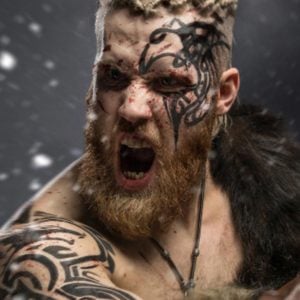
⚔ Is History Channel’s Vikings worth watching? I’ve written an article for those who are thinking of watching the show but haven’t made up their minds yet, where I also compare the show’s IMDb ratings in detail to Game of Thrones and The Last Kingdom. Go check it out if you haven’t made up your mind yet!
And then again, Vikings loved to express their creative sides in artful and ornamental ways, and were known to have filed down their own teeth in likely attempts to look scarier (and cooler), as seen in archeological findings.
So it’s not entirely out of this world to assume that they could also decorate their bodies by other means, just not very likely with the evidence we have available.
Were Vikings Clean or Dirty?
Vikings were known as clean and hygienic compared to the Anglo-Saxons in England, but for the Muslim chronicler Ibn Fadlan, their way of cleaning themselves seemed disgusting.
So it’s a matter of perspective, in other words, but what we do know specifically is that Vikings washed themselves every morning, and even had one dedicated day (Laugardagur / Lördag / Saturday) to get thoroughly clean.
But for Ibn Fadlan, the Rus Viking way of “washing” oneself every day wasn’t really deemed satisfactory, as he wrote the following in a section titled “Disgusting habits”:
Every day without fail they wash their faces and their heads with the dirtiest and filthiest water there could be. A young serving girl comes every morning with breakfast and with it a great basin of water. She proffers it to her master, who washes his hands and face in it, as well as his hair. He washes and disentangles his hair, using a comb, there in the basin, then he blows his nose and spits and does every filthy thing imaginable in the water. When he has finished, the servant carries the bowl to the man next to him. She goes on passing the basin round from one to another until she has taken it to all the men in the house in turn. And each of them blows his nose and spits and washes his face and hair in this basin.
Ibn Fadlan
It’s no so hard to understand Ibn Fadlan‘s disgust, when you factor in that according to muslim faith one has to wash in running water or water poured from a bowl (and not reused).
Viking DNA: How DNA Analysis Has Helped Us Understand Viking Looks
While we have previously been forced to draw conclusions and make assumptions about Viking looks based on Norse sagas, the odd historical account, and archeological artifacts, we can now establish with a lot more certainty how Vikings looked through DNA analysis and fast-improving technology and methodologies.
So how does this work exactly?
More specifically, modern-day scientists can extract and amplify ancient DNA from bones found in graves from the Viking Age, assembling fragmented genetic codes into a complete “genome”, and then comparing these genomes for inherited mutations (like the Twigstat method used in a Nature 2025 study).
This reveals not only population movements and familial ties, but perhaps more relevant to us: the physical traits of those we refer to as Vikings.
Viking DNA and How It Changed Over Time
I think it’s important to start with a key finding by the authors, that Viking DNA did in fact change over the course of the Viking Age.
Scandinavia was a very homogenous region in the early Iron Age (before 500 CE), a time where people from the entire Scandinavian Peninsula would look very similar (i.e. have very similar DNA). Fast forward 500 years, and we see a much more diverse region towards the end of the Viking Age, with influence from Central Europe, Britain, and Eastern Europe (but not so much Southern Europe as previous studies had suggested).
The study showed that Vikings likely had pale skin, light eyes, and blonde hair—common traits in Scandinavian populations. However, as people from Britain, Ireland, and central Europe moved into Scandinavia, new features like darker hair or other subtle differences started to appear, especially in places like Denmark and southern Sweden.
Furthermore, DNA from eastern Europe, particularly Lithuania and Poland, also mixed into southeast Sweden, showing that Viking communities—and therefore looks—were shaped by migrations from many different directions.
Summary:
With the help of Viking Age bones and modern technology—and of course historical documentation and archeological findings—we have gotten a phenomenal insight into what the Norsemen actually looked like. As it turns out, not too different from modern-day Scandinavians, with a sprinkle of British, Central, and Eastern European DNA in the mix as well!
🤔 Curious about where the Vikings came from and how they ended up in Scandinavia? I’ve written articles about Germanic ties and ancestry in Vikings, as well as an article about the origin of Vikings before they came to Scandinavia. Take your pick and continue learning about the Vikings and Norse history!
Sources:
https://www.nature.com/articles/s41586-024-08275-2
https://www.jstor.org/stable/pdf/27702690.pdf
https://www.nature.com/articles/s41586-020-2688-8
https://books.google.se/books/about/The_Annals_of_Fulda.html
https://www.arkeologi.uu.se/Research/Projects/viking-phenomenon/
https://books.google.se/books?id=E26YDwAAQBAJ
https://books.google.se/books?id=XZ4ZDAAAQBAJ
https://historiska.se/upptack-historien/artikel/det-hangde-pa-haret/
https://www.svt.se/nyheter/lokalt/vast/modetrendens-blodiga-historia
https://arkeologerna.com/bloggar/kyrkoarkeologi/okand-kyrkogard-hittad-i-vreta-kloster/
https://varldenshistoria.se/civilisationer/vikingar/vikingar-slaktades-och-slangdes-i-massgrav
http://pediatrisk-endokrinologi.no/2008/1/Werner_2008_1.pdf
https://forskning.ku.dk/soeg/result/?pure=da/persons/26558
https://www.bbc.com/news/uk-scotland-tayside-central-13064786
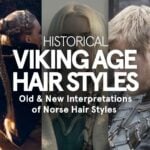 Viking Age Hairstyles & Beards: Historical & Modern Takes
Viking Age Hairstyles & Beards: Historical & Modern Takes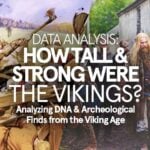 How Tall & Strong Were Vikings? (Based on DNA & Archeology)
How Tall & Strong Were Vikings? (Based on DNA & Archeology)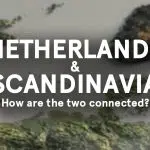 How the Dutch & Scandinavians Are Connected (Complete Guide)
How the Dutch & Scandinavians Are Connected (Complete Guide) Viking Music: What Instruments Did the Vikings Play? (Examples)
Viking Music: What Instruments Did the Vikings Play? (Examples)

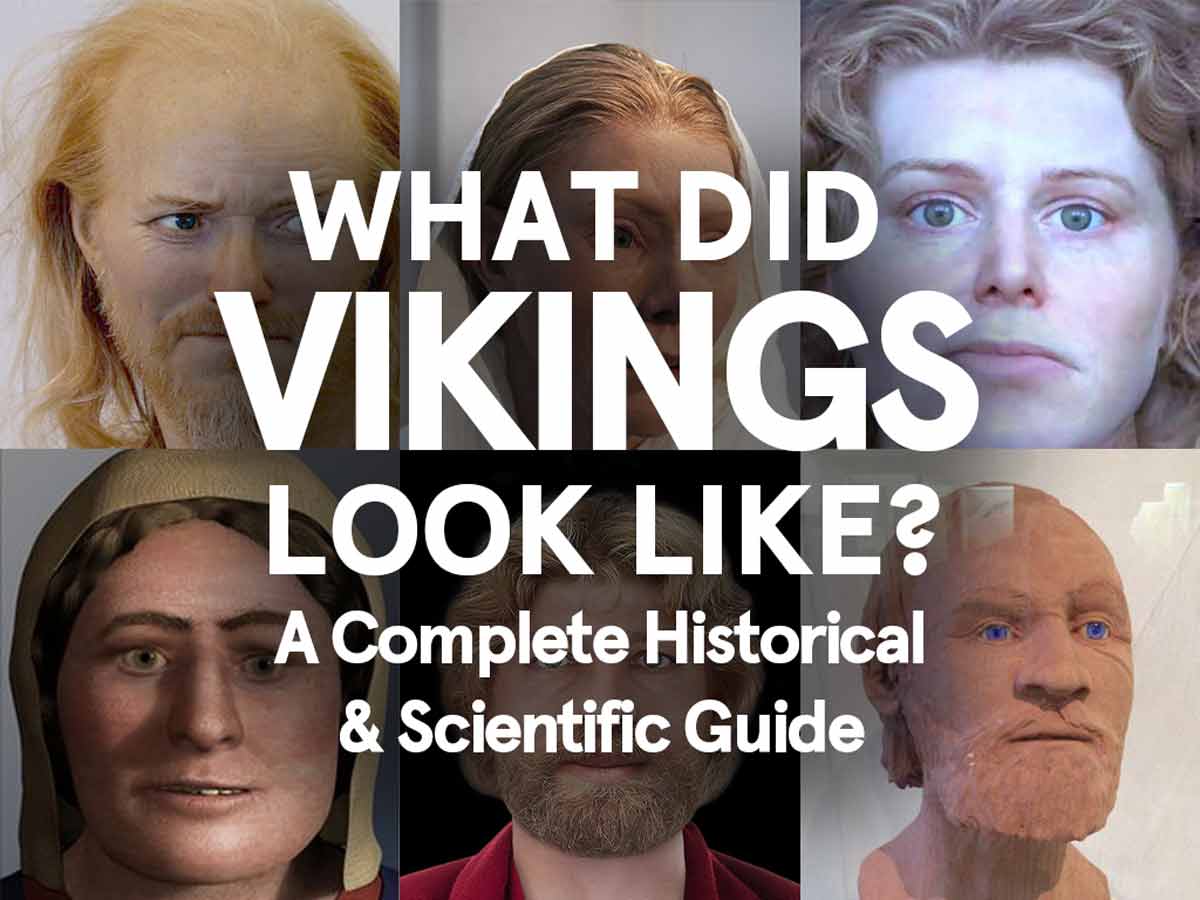
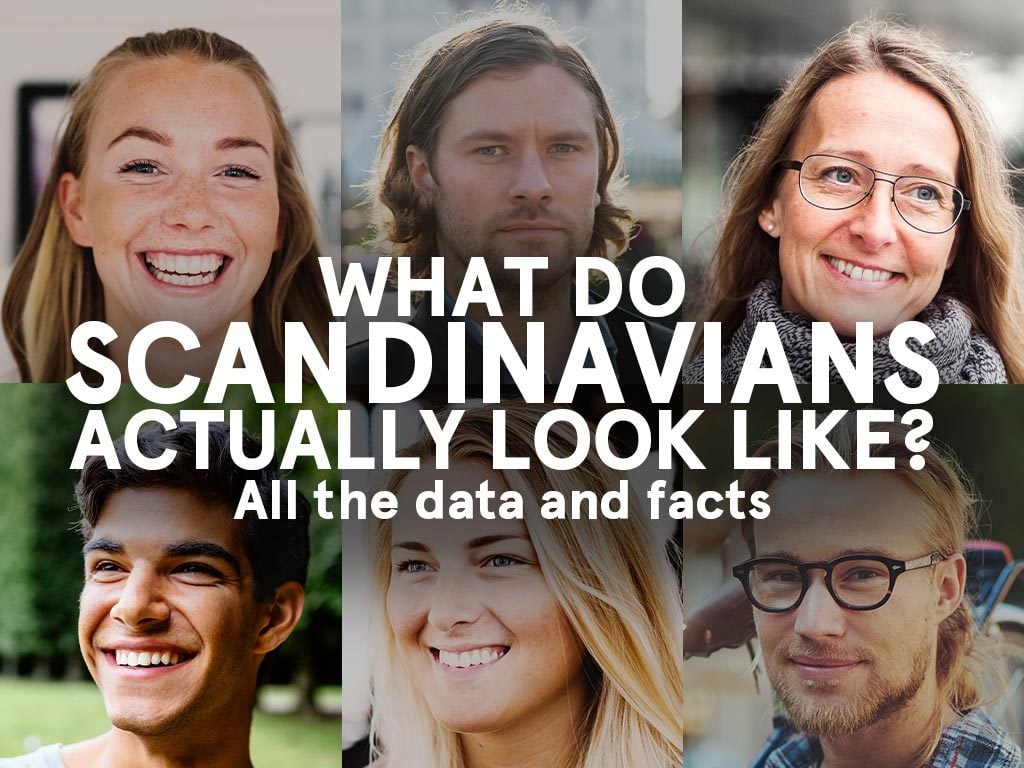
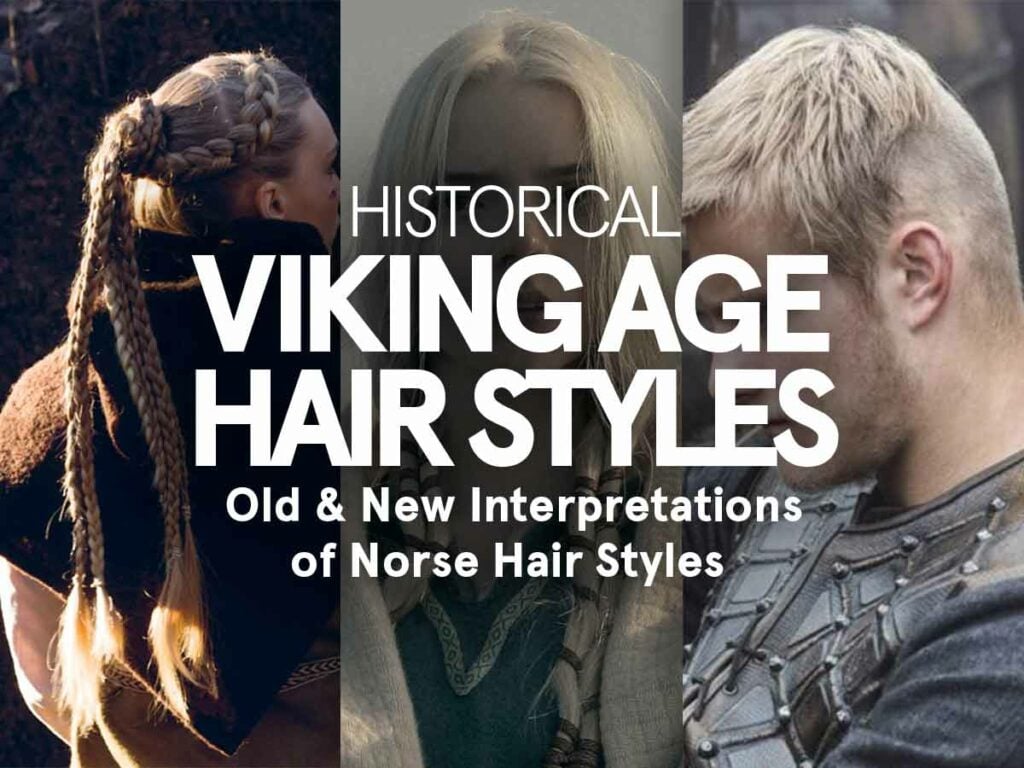
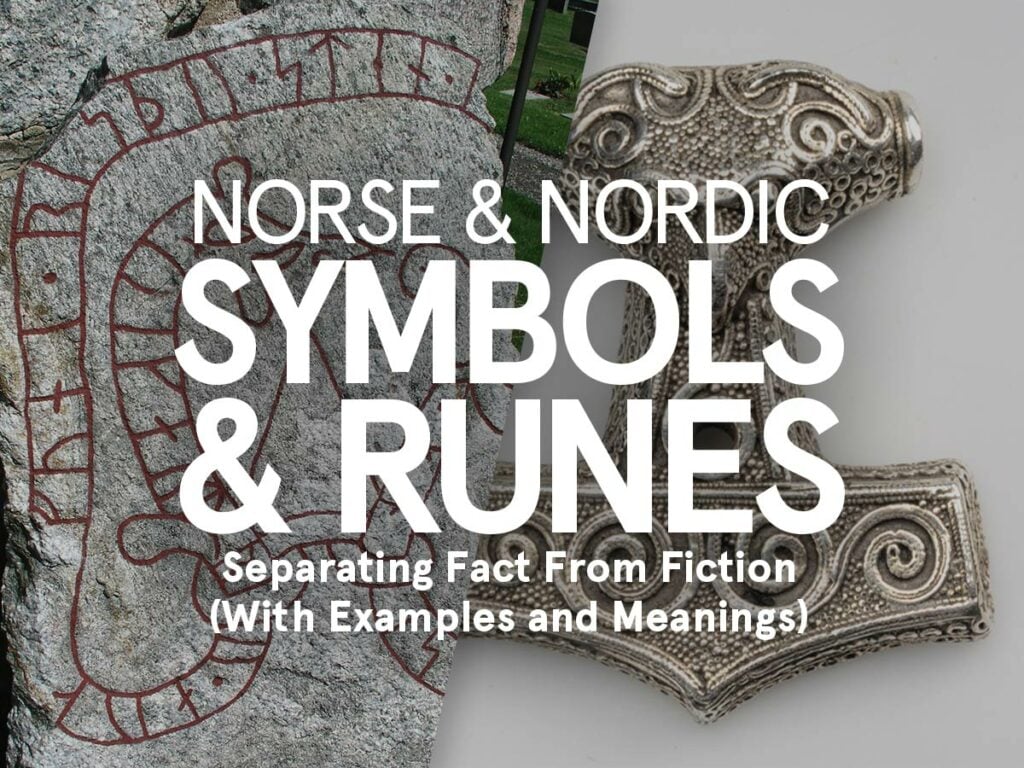
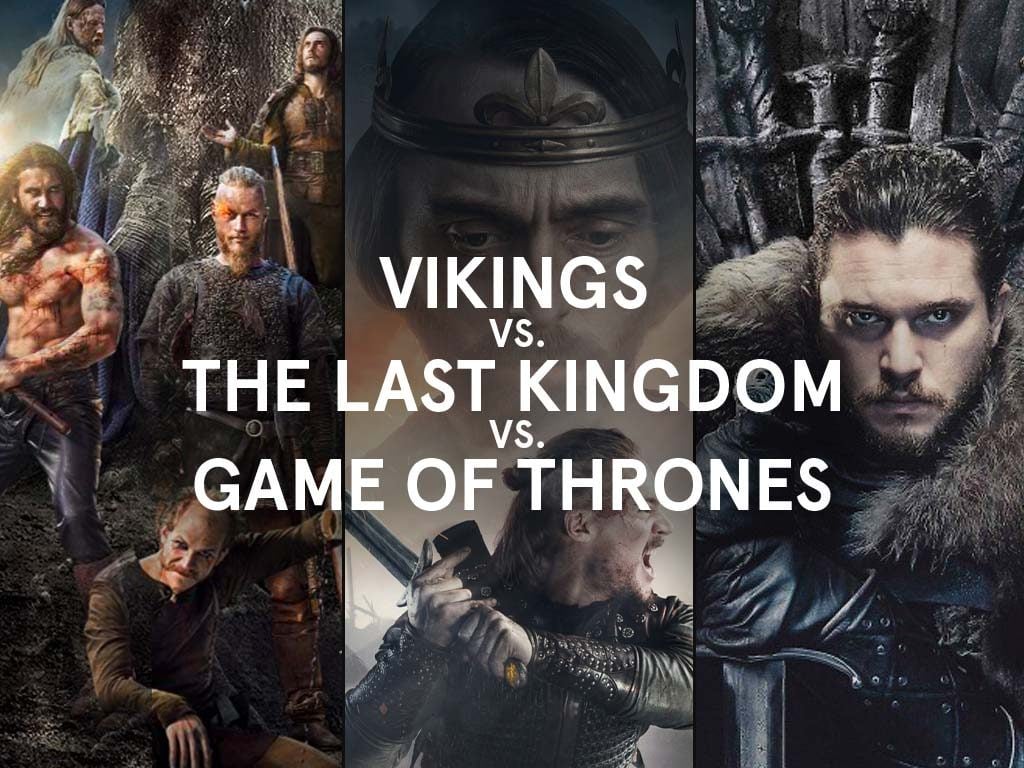
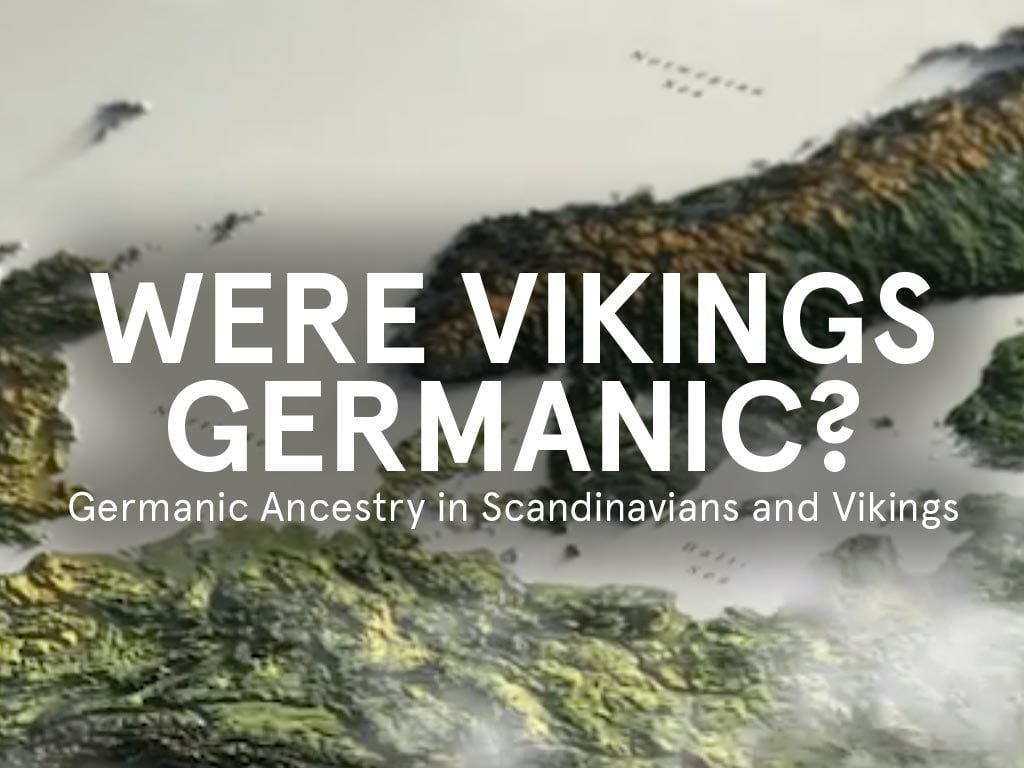
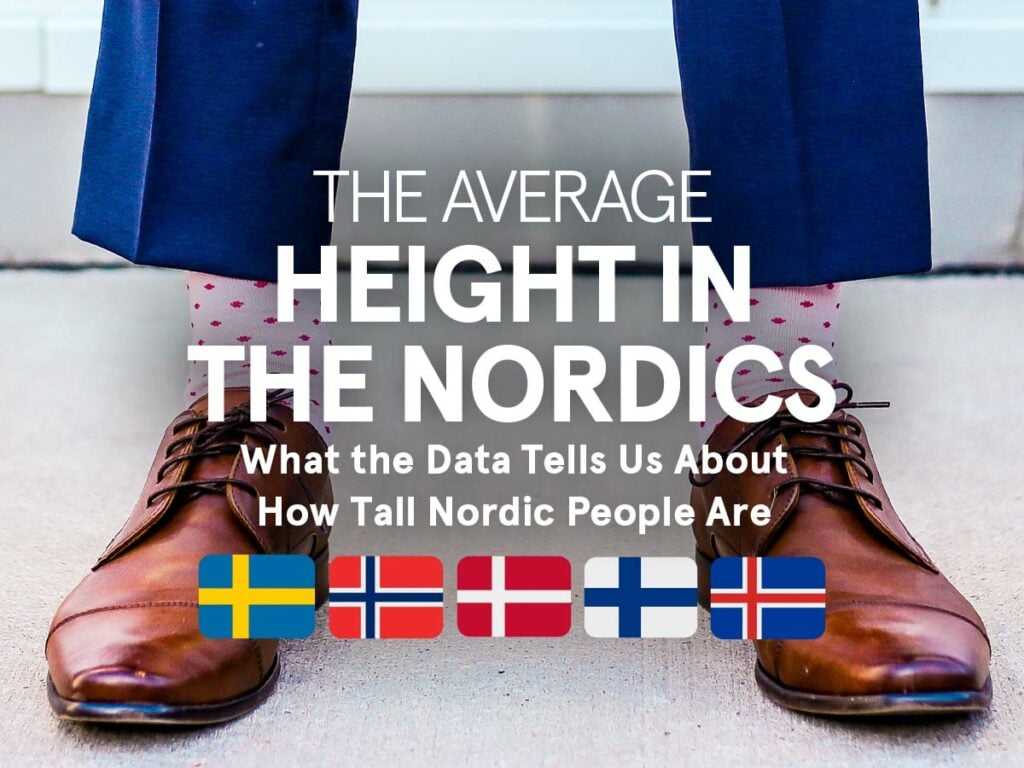
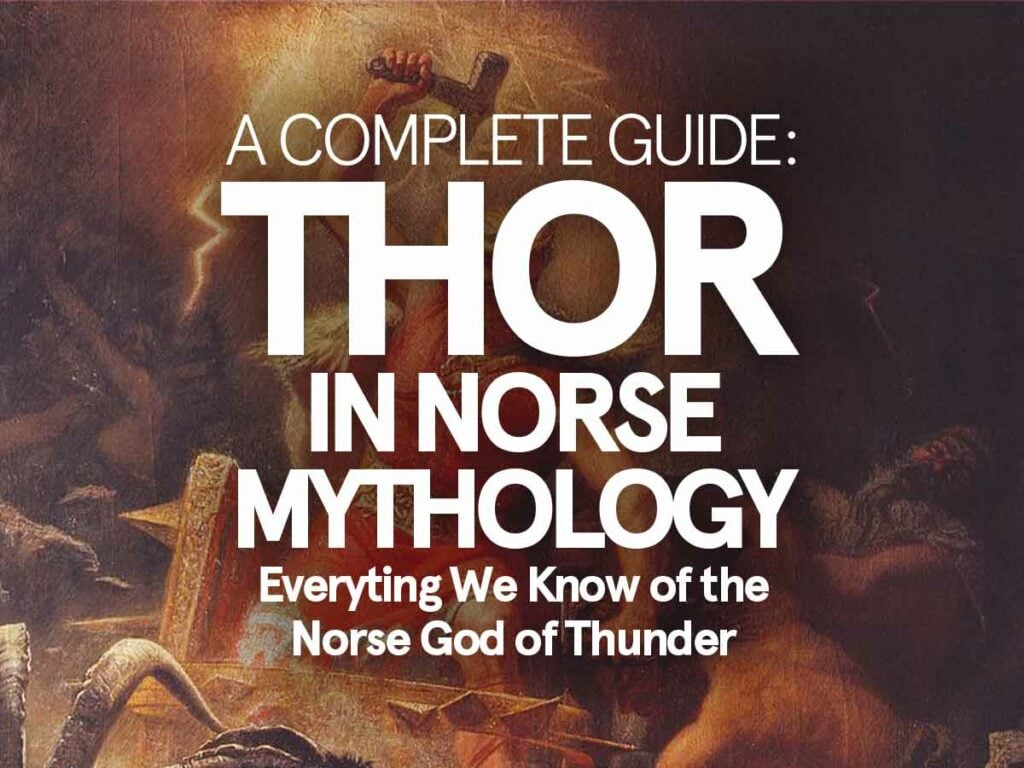
Hello, I am interested in this claim here: “It is believed that Vikings had more gender-neutral facial features than Scandinavians today, meaning males and females had more similar characteristics. Females had stronger jawlines in general, while men had slimmer faces.”. Can you tell me which of the articles that refers to and on which page I can find that claim? It would really help me in my studies, thank you for reading!
Hi Love, you can see it to some extent in the various facial reconstructions done by different institutions around the world (based on analysis of DNA and skeletal remains): https://nordicperspective.com/history/vikings/how-vikings-actually-looked-complete-guide#index2
It is also mentioned by the National Museum of Denmark right here:
https://en.natmus.dk/historical-knowledge/denmark/prehistoric-period-until-1050-ad/the-viking-age/the-people/appearance/
Here’s a quote from their text: “These ambiguous facial features mean that it is difficult to decide upon a Viking skeleton’s sex based on the skull alone. Therefore, other traits need to be studied in order to identify the sex of skeletons. Pelvis width can be very useful in this respect.”
Good luck!
Karl
Hello Karl,
thank you for an interesting and laudably well-founded article on Viking physical appearances.
One point as regards the prsumed basis of their physical strength:
Their habitat was coastal/insular, meaning that not just Viking raids/trading expeditions, but no small amount of travelling in general (even semi-local transportation) was done by sea – more specifically by oar (since sails are only helpful when the wind is strong enough AND blows in the right direction)!
As opposed to the traditions of other cultures of leaving rowing to slaves, Viking ships were propelled by the very Viking warriors themselves. Even today – in spite of all sorts of high-tech fitness machines – rowing is recognized as the optimal single-exercise training, engaging most of the muscle groups as well as maximising cardiovascular fitness. So when at sea, many hours each day were spent ‘at the gym’ .. rowing.
No wonder they were in good shape! 😉
Best regards,
Christian
(from Denmark – the country where when biking, you have a good chance of riding against the wind both heading out AND going home, since the winds are constantly changing! 😉 )
Hej Christian,
Thank you for this insight — I really appreciate you taking the time to share it. You make an excellent point about rowing being a fundamental part of Viking life and, by extension, their physical conditioning.
It’s true that the reliance on oar power, especially in the less predictable northern winds, would have demanded an exceptional level of endurance and strength — not only from warriors on expeditions, but from anyone regularly travelling or trading along the coasts and rivers.
This is a great addition to the discussion of Norse/Viking physical traits, and I’ll make sure to take it into consideration for future updates to the article. It’s always valuable to have perspectives that bring everyday Viking life into sharper focus — especially from someone familiar with the Nordic winds firsthand (and yes we unfortunately also have the same wind phenomenon on the other side of Öresund!).
Best,
–Karl